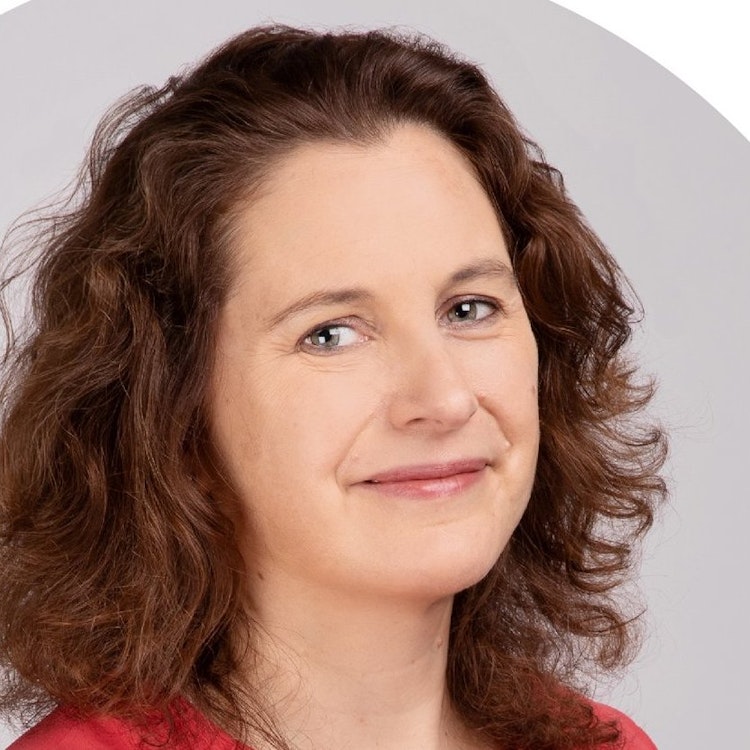As one of Europe’s most prolific LPs, state-backed bank Bpifrance has a unique view into how well — or poorly — European VC is faring during this challenging time.
Anne Germain, senior investment director of the Funds of Funds division, says in an interview with Sifted that the investor has been helping VC funds in its portfolio chart a course through a difficult fundraising environment.
Germain says it’s impossible to put a number on how many funds might be in mortal danger at the moment because of the nature of how such funds operate — but that funds shutting down is usually a slow process that unfolds only when firms go out to raise another fund.
Germain projects that it will take several more years before the true impact of the current downturn on French VCs can be evaluated. She recalled working as an LP in 2004 and meeting firms battered by the dot-com bust. When she rejoined Bpifrance in 2017, many of those firms were still around.
“It's a long-term game,” she says. “That is sort of baked in as well when you raise a first fund. It will take a number of years until the management company will accept that they will not be able to continue in this situation and consider different options.”
As a major LP, Bpifrance will offer guidance about possible options for a distressed fund, such as joining forces with another firm or winding down operations by finding ways to ensure investments in startups are still being managed.
Over the past decade, the division has backed 260 funds from 117 management companies ranging from accelerators to seed and growth, including names like Partech, Alven and Elaia. It invests in European and international funds.
Bpifrance, which was created from a merger of previous public banks to fund innovation, celebrated its 10th anniversary last year. Of the €51bn that the bank has in investment assets under management, €17bn is in its Funds of Funds division. In addition to VC fund investments, the division also writes cheques to general-purpose regional funds and firms that invest in projects to help existing small and mid-size businesses pursue innovation projects.
A dual mission: returns and economic impact
Bpifrance’s edge as an LP lies in its dual mission of generating returns but also maximising economic impact — which means it can back new VC firms, funds with a new strategy in existing firms, or teams spinning out from previous firms.
Bpifrance will weigh investments in VC funds in sectors with less historical data and funds with less of a track record to encourage innovation in essential, unproven areas like health or climate. Germain says the diversity of this portfolio has allowed Bpifrance to take much larger risks compared to other institutional LPs — and help build an ecosystem.
“If you want to have new strategies emerge, you're going to have to assume the risk,” Germain says. “We are more willing to take risks than most of our private peers.”
New funds receive about 25% of the bank’s Funds of Funds money each year. Only a few who pitch the bank will get money, though Germain says it’s hard to put a number on the percentage of pitches that get funded each year because sometimes discussions can stretch over years.
“We are relatively open to meeting teams,” Germain says. “Some people tend to assume that we invest in everybody. We don't. We are highly selective.”
Bpifrance weighs the background of the team and whether it has already managed to attract other private capital. The criteria are a bit more “benevolent” for new teams, funds and strategies because the bank understands they won’t necessarily have the track record that many private investors are seeking, Germain says. Bpifrance also wants to see differentiation.
If you want to have new strategies emerge, you're going to have to assume the risk,” Germain says. “We are more willing to take risks than most of our private peers
“Typically, if it’s seed, or climate tech, or life sciences, then we are probably more open to looking at your projects,” Germain says. “If you're coming with an Nth sort of generalist digital VC fund, that's going to be much more of a struggle for you to demonstrate to what extent you are different from the dozens of funds that are already in our portfolio.”
New VC horizons
Entering 2024, Bpifrance is trying to fill other investment gaps, notably in climate, where Germain believes there is still not enough VC attention and where funds struggle to attract LPs.
“If you look at the numbers they’re saying need to be invested to deal with climate change, I think we're far from it,” she says. “There’s certainly not enough money being invested in deep tech for climate. There’s probably too much being invested in software solutions. Don’t get me wrong. I think you need some of that. But at the end of the day, it’s not software that’s going to save us.”
The bank has created the Green Industry Acceleration Program to support 10 general partners annually who are investing in low-carbon processes. The Funds of Funds division is also managing the government’s €350m National Industrial Venture Fund to encourage VC funds that back companies that have a proof of concept and need to move into an industrial phase of production.
European shortfall
Too many European VCs still don’t understand the importance of communication and marketing themselves compared to American and British funds, Germain says. Firms haven’t developed robust investor relations so their relationship with LPs often remains transactional — they only call when they need money, every few years.
“I think some of the more old-fashioned funds still struggle with the fact that they need to be much more visible and communicate a lot more in terms of what they're doing,” Germain says. “Fundraising is not something that you do every four years. It is something that you're constantly doing.”
Because venture capital tends to be only a small fraction of the portfolio for many large European institutional investors, they often don’t have teams in place to dedicate much time to analysing the market or potential investments.
Some people tend to assume that we invest in everybody. We don't. We are highly selective
When LPs are only writing four or five cheques a year, Germain says, it’s problematic to get their attention in the best of times. That only gets tougher when macroeconomic conditions and plunging valuations are creating a negative vibe around the sector, she adds.
As VCs try to sell their funds as valuable investment assets, they also face headwinds caused by Europe’s historically poor liquidity market. There simply aren’t enough acquisitions happening at big enough multiples compared to the US market.
The French government’s Tibi initiative, designed to bring more institutional investors into growth equity funds has helped, Germain says. She also cites the European Tech Champions Initiative — led by France and Germany — which is seeking to raise €10bn for a fund of funds to create more late-stage funding for scaleups.
Germain also says Europe still needs more buyout funds that could acquire profitable startups to create liquidity and help them through the next stages of their journey. But getting such funds with more than €1bn or more in place is another long-term project.
“We're really obsessed with the whole idea of the continuum of investments,” Germain says. “We want to have funds that can address all the different stages in a profitable way.”



